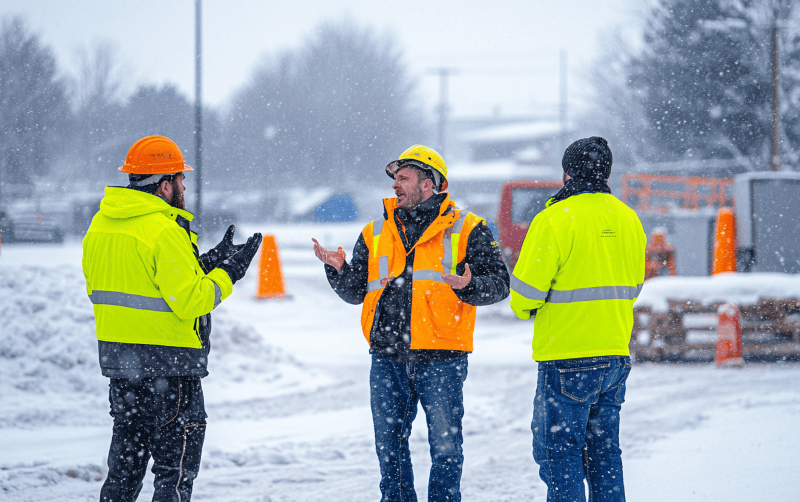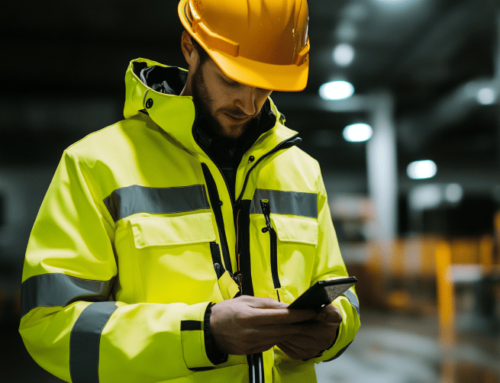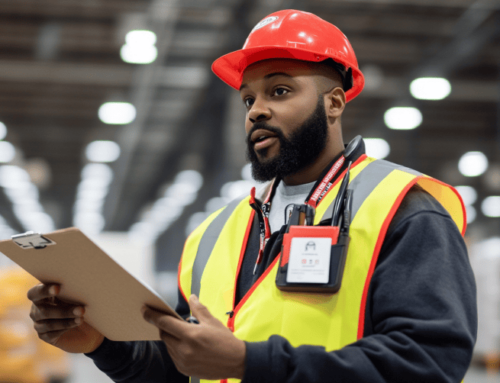Construction sites are dynamic environments where safety is non-negotiable. A construction safety vest is a critical piece of personal protective equipment (PPE) designed to enhance visibility and protect workers from potential hazards. Selecting the right construction safety vest isn’t just about meeting basic requirements—it’s about ensuring worker safety, regulatory compliance, and comfort on the job. In this SEO-optimized blog post, we’ll explore seven practical, in-depth tips to help you choose the perfect construction safety vest, whether it’s a standard safety vest, an OEM safety vest, or a branded construction safety vest tailored to your needs. Let’s dive into the details to make your decision both informed and effective.
1. Understand Construction Safety Vest Classifications
Choosing the right construction safety vest starts with understanding its classification, as this determines its visibility level and suitability for specific job sites.
1.1 ANSI/ISEA 107 Standards Explained
The American National Standards Institute (ANSI) and International Safety Equipment Association (ISEA) establish the ANSI/ISEA 107 standard, which categorizes safety vests into three classes based on visibility requirements:
- Class 1: Designed for low-risk environments with traffic speeds below 25 mph (e.g., parking lots or warehouses). These vests feature at least 155 square inches of reflective material and 217 square inches of high-visibility background fabric.
- Class 2: Ideal for moderate-risk settings, such as construction sites near roads with traffic speeds of 25-50 mph. They require 201 square inches of reflective tape (at least 2 inches wide) and 775 square inches of fluorescent fabric.
- Class 3: Built for high-risk areas, including highway construction or night work, where traffic exceeds 50 mph. These vests demand 310 square inches of reflective material and 1,240 square inches of background fabric, often with long sleeves or additional coverage.
For most construction scenarios, a Class 2 construction safety vest strikes the right balance, but Class 3 is essential for high-speed traffic zones or low-light conditions.
1.2 Matching Classifications to Your Needs
Consider your site’s risks: Is it near heavy machinery or fast-moving vehicles? A branded construction safety vest meeting Class 2 or 3 standards ensures workers stand out, reducing accident risks. Always verify the classification label before purchasing your construction safety vest.
2. Choose the Right Color for Maximum Visibility
Color plays a pivotal role in making a construction safety vest effective, directly impacting how easily workers are seen.
2.1 Standard High-Visibility Colors
The most common colors for safety vests are fluorescent yellow-green and orange. These hues leverage daylight fluorescence to stand out against construction backdrops. Lime yellow-green offers superior visibility in low-light conditions, while orange is often preferred in urban settings with complex backgrounds.
2.2 Regional Preferences and Regulations
Some regions mandate specific colors. For instance, the U.S. Occupational Safety and Health Administration (OSHA) accepts both colors under ANSI standards, but local guidelines might favor one. When selecting a construction safety vest, check your area’s preferences to ensure compliance and visibility.

3. Select Appropriate Fabric Materials
The fabric of a construction safety vest influences its durability, comfort, and performance in diverse conditions. Here’s how to choose wisely.
3.1 Common Fabric Options
- Polyester: A staple in safety vests, polyester is durable, resisting abrasion and UV degradation. It typically weighs 120-150 gsm (grams per square meter) and retains fluorescent colors well, making it ideal for long-term use.
- Nylon: Lightweight (around 100-130 gsm) and tear-resistant, nylon excels in humid or rainy climates due to its quick-drying properties. It’s less breathable than mesh but more robust.
- Mesh: With an open-knit structure (80-120 gsm), mesh prioritizes breathability, perfect for hot climates or summer construction work. It sacrifices some durability but enhances comfort.
3.2 Balancing Performance Features
Modern OEM safety vests often combine materials or add treatments:
- Waterproofing: Polyester vests with PVC coatings (e.g., 0.35 mm thick) repel rain, ideal for outdoor sites.
- Breathability: Mesh or perforated fabrics allow airflow, reducing heat stress—a critical factor since OSHA notes heat-related incidents spike in temperatures above 85°F (29°C).
For a construction safety vest, match the fabric to your climate and job demands—polyester for rugged durability, mesh for ventilation, or a hybrid for versatility.
4. Consider Additional Features for Functionality
A construction safety vest can go beyond basic visibility with features that boost safety and convenience.
4.1 Key Features to Look For
- Reflective Strips: High-quality tape (e.g., 3M Scotchlite) with a retroreflective coefficient of 330 cd/lx/m² ensures visibility up to 1,000 feet in low light. Wider strips (2-3 inches) enhance detection.
- Pockets: Multi-pocket designs (e.g., chest and lower pockets) accommodate tools, radios, or IDs, reducing the need for additional gear.
- Adjustable Straps: Side Velcro or elastic bands accommodate layers and body sizes, ensuring a snug fit (typically adjustable from S to 3XL).
4.2 Specialized Additions
- Breakaway Points: Five-point breakaway designs detach if snagged, a must for machinery-heavy sites.
- LED Lights: Some branded construction safety vestsintegrate battery-powered LEDs for extreme low-visibility scenarios.
Choose features that align with your crew’s tasks—reflective strips for night shifts, pockets for builders, or breakaways for movers.
5. Ensure Compliance with National Regulations
A compliant construction safety vest isn’t optional—it’s a legal and safety necessity.
5.1 U.S. and International Standards
- United States: OSHA mandates high-visibility apparel under 29 CFR 1926.651(d) for workers near traffic, aligning with ANSI/ISEA 107. Fines for non-compliance can exceed $13,000 per violation.
- Canada: CSA Z96-15 outlines similar classes, emphasizing reflective tape width and placement.
- Europe: EN ISO 20471 replaces older EN 471 standards, requiring specific luminance and retroreflection levels.
5.2 Verifying Compliance
Check for certification labels on your safety vest. Non-compliant vests risk penalties and endanger workers. Consult local authorities or industry bodies (e.g., National Safety Council) to confirm your construction safety vest meets all mandates.
6. Think About the Work Environment
The right construction safety vest adapts to your specific job site conditions.
6.1 Scenarios and Roles
- Road Construction: Workers need Class 2 or 3 vests with 360-degree reflective coverage for traffic zones.
- Building Sites: Class 2 vests with durable polyester suit daytime work; add LED-enhanced options for dusk.
- Welders: Flame-resistant fabrics (e.g., treated polyester) paired with high-visibility colors protect against sparks.
- Cleaners/Movers: Lightweight mesh Class 1 or 2 vests suffice for indoor or low-traffic tasks.
6.2 Environmental Factors
- Night Work: Prioritize extensive reflective tape and darker backgrounds to amplify contrast.
- Hot Climates: Opt for mesh or moisture-wicking fabrics to combat heat stress, a factor in 30% of construction injuries per OSHA data.
Tailor your construction safety vest to the task and environment for optimal protection.

7. Prioritize Comfort and Fit
A well-fitting construction safety vest ensures it’s worn consistently, maximizing safety.
7.1 Fit Considerations
- Adjustability: Vests with side straps or expandable panels fit chest sizes from 36 to 60 inches, accommodating seasonal layers.
- Weight: Lightweight options (under 300 grams) reduce fatigue during 10-hour shifts.
7.2 Comfort Features
- Breathable Design: Mesh backs or ventilated linings prevent overheating, crucial since discomfort leads to 20% of PPE non-compliance (per NIOSH studies).
- Padding: Some OEM safety vestsadd shoulder padding for heavy tool belts.
Test a construction safety vest for mobility—workers should bend, lift, and reach without restriction.
Conclusion: Making the Right Choice with Confidence
Selecting the perfect construction safety vest is a blend of science and practicality. By understanding classifications, choosing visible colors, picking suitable fabrics, adding functional features, ensuring compliance, matching the work environment, and prioritizing comfort, you equip your team for safety and success. Whether you need a standard safety vest, an OEM safety vest, or a branded construction safety vest, these tips guide you to a smart decision.
For those seeking top-tier options, partnering with a trusted manufacturer can elevate your choice. As a designer and sales professional at BOWINS Garment, I’ve seen how our 18 years of expertise transform workwear needs into reality. Ready to choose the right construction safety vest? Start with these tips and build a safer, more visible workforce today.




